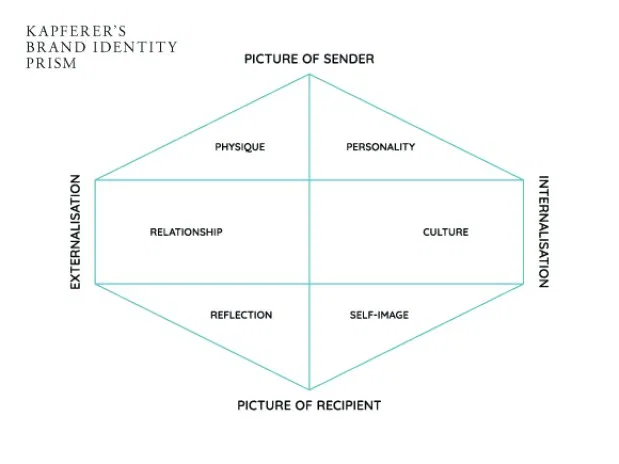Name a unicorn startup or a fortune 500 company with poor branding.
None. Right?
Yet, I don’t know why so many entrepreneurs overlook branding?
Your org is your brain child. Maybe, you thought of starting up because you were not getting enough kick, maybe you couldn’t resist yourself from solving a denting problem, or maybe you ventured into entrepreneurship to create an impact – that lasts.
And all that is great, but-
- What if your customers don’t know your cause, your story?
- What if your story falls on deaf ears?
- How do you even strike that heart-to-heart connection with them?
- How do you build loyalty for your products and services?
Yes, branding answers them all. Because branding is not just about sending the message out, it’s about how the story is delivered, how it is perceived, and how it is felt.
Or let’s say, winning the branding game is all about – winning customers, winning markets.
Read this insight to understand how branding works at the core. And towards the end, find out how codewave may help you roll-out stellar digital products into the market, coz without that no branding can help you tap the full potential of your org & brand.
How do we tend to look at branding? – a glimpse into why branding fails for many!
Key decision makers of most of the startups don’t get branding right. For them branding is-
- The process whereby an organization establishes a public image to distinguish itself from competitors.
- A phrase, design, or idea that is easily recognizable by the masses.
- Your company’s story.
- How do your employees engage in their daily work lives?.
- Engaging people without making things too complicated.
Many even think branding is required only after your startup reaches a certain level of growth/success.
While there is no short-right answer to this, companies fail at branding because they see it as an activity in isolation.
Yes, branding is about-
- Creating an appealing investor deck
- A no–nonsense product/service
- A razor-sharp brand proposition, messaging, voice
- Distinctive visual and linguistic identity like logo, brand color palette, font style, and more
- Captivating stories
But it’s not limited to these, it’s more.
It’s about-
- Deeply connecting with your audience
- Being genuine, being authentic & real, communicating with them
- Reflecting shared passion & elevating self worth
- Inspiring with purpose & shared values
- Reminding us of human greatness, our ability to love & care.
- Continuously reinventing the new you, while not losing the good old you!
Allow me to spill the secrets of how a powerful brand is made-
You pick any powerful brand, and you’ll find they have the 4 foundations laid right:
- Brand Awareness
- Brand Identity
- Brand Image
- Brand Personality
Brand Awareness
‘Experience’ comes before loyalty. And prospects will experience your product/service only if they are aware of its existence. Sounds like marketing? Yup it is. Marketing done right, is part of branding. Or better to say, brand awareness could/should be an outcome of your marketing campaigns.
The extent to which a brand is recognized by potential customers and is successfully associated with a certain product or product vertical(s) is known as brand awareness.
Why Is Brand Awareness Important?
What comes to your mind when you hear the names like Coca Cola, Apple, WeWork, or AirBnb? You can recognise these brands, and you can recall the products or industry verticals where they are active. We can infer that these organizations have high brand awareness & recall. And so, maybe when we are looking for a coworking space, at times we directly google WeWork. That’s the perk of high brand awareness and branding in general – it helps you skip the rat race.
Strategies for driving brand awareness
- Values-based, emotional, aspirational, purpose led brand narrative
- Clear, consistent conversations across all channels
- Omnichannel presence, reach, visibility & engagement – integrating traditional advertising & the new age digital marketing (including virtual worlds & metaverses)
- Partnerships & collaborations with brands advancing/standing up for similar causes
- Consistent, social media engagement
- Offline & online community building
- Consistently high customer ambassadorship
- Consistently high employee referrals & ambassadorship
- Retargeting & Remarketing
- Targeted campaigns, seasonal campaigns
BRAND IDENTITY
Brand identity refers to the name, color, logo, copy, typography, design, and other visual elements of a brand.
While awareness is about making target groups cognizant of your presence, Identity is about forging a personal connection with them with tangible branding elements. Name, form, personality/voice, and ‘perception’ are the main pillars of establishing a strong brand identity.
Kapferer’s brand identity prism is a good framework to discover/design your brand identity by focusing on one facet at a time.
Kapferer Brand Identity Prism
Jean-Noel Kapferer categorized the brand identity elements into 6 facets, and organized them into a prism to reflect the inter-relationship between each of these elements.

At codewave, we have our own framework for molding a brand identity and for winning consumer passion. Here’s a glimpse, the image is self-explanatory but we shall explain in more detail in upcoming blogs. Do follow Codewave on LinkedIn to not miss the insight.

Brand Image
Brand image is intangible. It’s how people perceive you. It’s the image of your brand in the audience’s head. While brand identity is something that you (brand owners) can create/forge, brand image is something that you can only influence, but not create. The interactions customers/prospects/people have with your brand shape your brand’s image. These include social media engagement, banner ads, TV commercials, interviews, sponsorships, product packaging, product/services quality & outcomes, design, copy, promises, initiatives, and communication in general.
Brand Personality
There are brands which kinda enjoy a loyal customer base. Then there are some brands for who the customers fight for. Remember the support that came pouring in when Apple denied unlocking a criminal’s phone? Guess what is behind such extreme loyalty? Brand personality and personal relations with the brand. Yes.
Brand personality is personifying your brand, making it more human. Imagining – if your brand was a person, how would they speak, listen, respond?
To create a brand personality that strikes a chord with your audience, you first need to understand your target group in and out. This includes decodes their personality, their preferences, likes, dislikes, aspirations, capabilities, limitations, and everything.
The next big brand is human, authentic, honest, and vulnerable.

Next, you can work on creating your own brand archetype, define the personality of your brand, and find the overlapping zone between your brand and the target group. This overlapping zone is your window to establishing a personal connection with your audience.
Summing it up..
- Great brands know their customers in and out. They understand it is not just about the product and offerings, but also the market perception of your brand i.e., brand awareness, brand identity, brand image, and brand perception.
- Faking your brand is not a sustainable solution, the next big brand is human, authentic, honest, and vulnerable.
- Branding is not isolated from design, development, marketing, sales, operations, but a cohesive whole of all the involved business processes.
Reach out to codewave consultants for building human first digital solutions, and brainstorming on how you may sustainably grow your organization to new heights.
He is an MBA graduate who was part of the tech evangelists team @ codewave.







